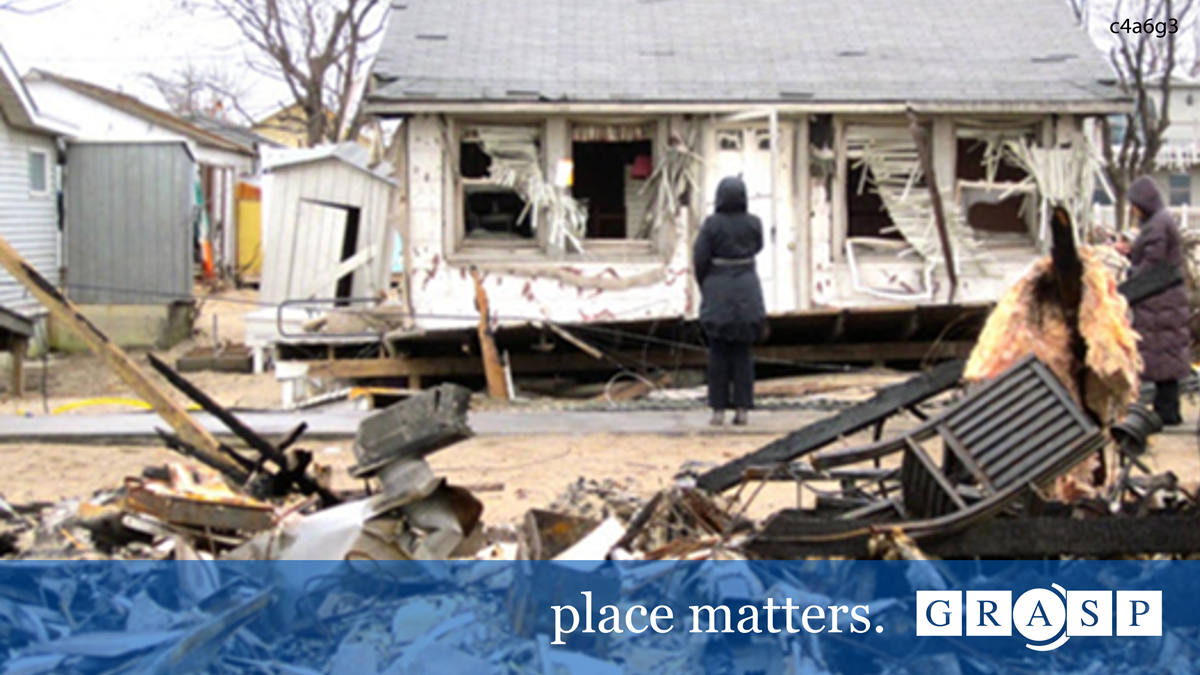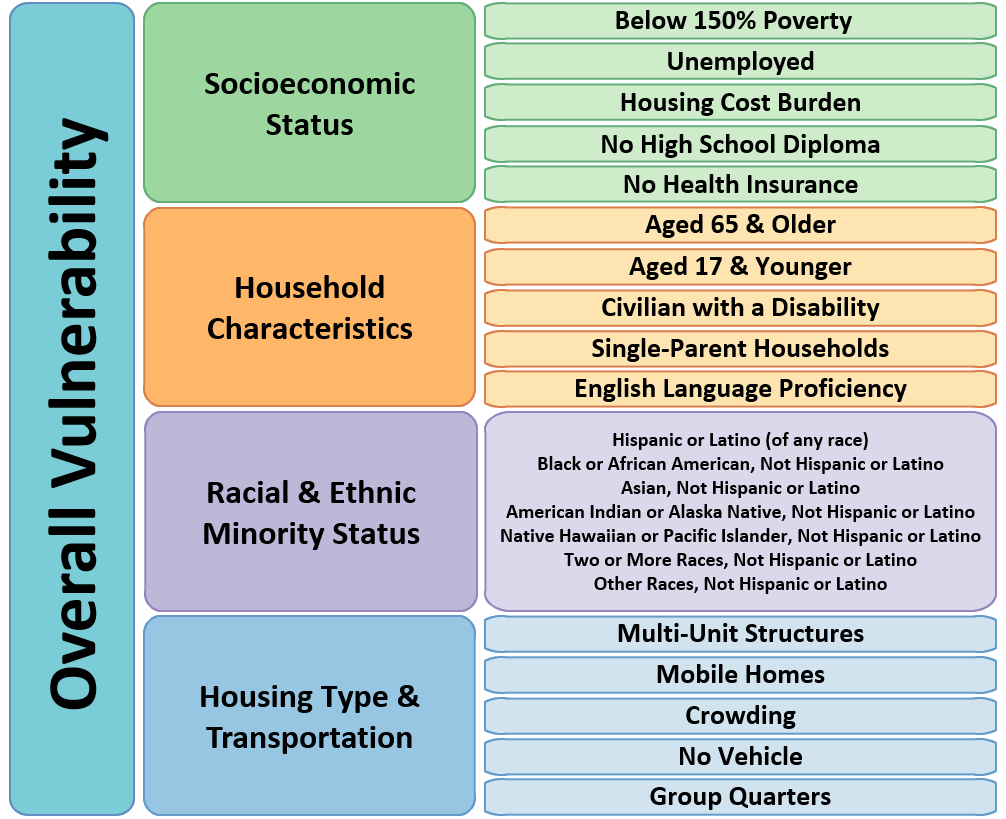At a glance
Social vulnerability refers to the demographic and socioeconomic factors (such as poverty, lack of access to transportation, and crowded housing) that adversely affect communities that encounter hazards and other community-level stressors. These stressors can include natural or human-caused disasters (such as tornadoes or chemical spills) or disease outbreaks (such as COVID-19).

Overview
The Centers for Disease Control and Prevention and Agency for Toxic Substances and Disease Registry Social Vulnerability Index (hereafter, CDC/ATSDR SVI or SVI) is a place-based index, database, and mapping application designed to identify and quantify communities experiencing social vulnerability. The Geospatial Research, Analysis & Services Program (GRASP) maintains the CDC/ATSDR SVI to help public health officials and local planners better prepare for and respond to emergency events with the goal of decreasing human suffering, economic loss, and health inequities.
SVI Interactive Map
History
The Pandemic and All-Hazards Preparedness Act of 2006 cited that public health preparedness and response capabilities were critical needs for the nation. CDC/ATSDR and the Office of Environmental Health Emergency Management (OEHEM) decided to address social vulnerability as it relates to natural or human-caused hazards and public health emergencies. In 2007, a group including social scientists, geographers, and a statistician within the Geospatial Research, Analysis, and Services Program (GRASP) began developing the Social Vulnerability Index. The first CDC/ATSDR SVI database was released in 2011 and the team published the SVI approach and methodology in the paper titled, “A Social Vulnerability Index for Disaster Management” (Flanagan, B.E., Gregory, E.W., Hallisey, E.J., Heitgerd, J.L., & Lewis, B. (2011).
Methodology
The current CDC/ATSDR Social Vulnerability Index uses 16 U.S. Census variables from the 5-year American Community Survey (ACS) to identify communities that may need support before, during, or after disasters. These variables are grouped into four themes that cover four major areas of social vulnerability and then combined into a single measure of overall social vulnerability.

Access the CSV file of the Overall Vulnerability image shown above.
Changes over time
The CDC/ATSDR SVI has changed four times over the years as can be seen in the timeline below:

Access the CSV file of the SVI Changes Over Time image shown above.
SVI in action
The CDC/ATSDR SVI databases and maps can help communities prepare for and recover from public health emergencies, and prevent adverse effects among socially vulnerable populations, such as emotional distress, loss of property, illness, and death.
- Emergency planners use the SVI to decide the number of emergency personnel needed, plan the best way to evacuate people, and account for socially vulnerable populations.
- Public health officials use the SVI to identify areas in need of emergency shelters and estimate the amount of supplies needed.
- State and local health departments and non-profits use the SVI to guide community-based health promotion initiatives.
SVI County Map Series
The CDC/ATSDR SVI County Map Series include maps of the overall social vulnerability scores, as well as the four themes. These maps depict the SVI rankings of communities, at the census tract level, within a specified county.

Select "More" on the SVI Interactive Map page to access the County Map Series.

